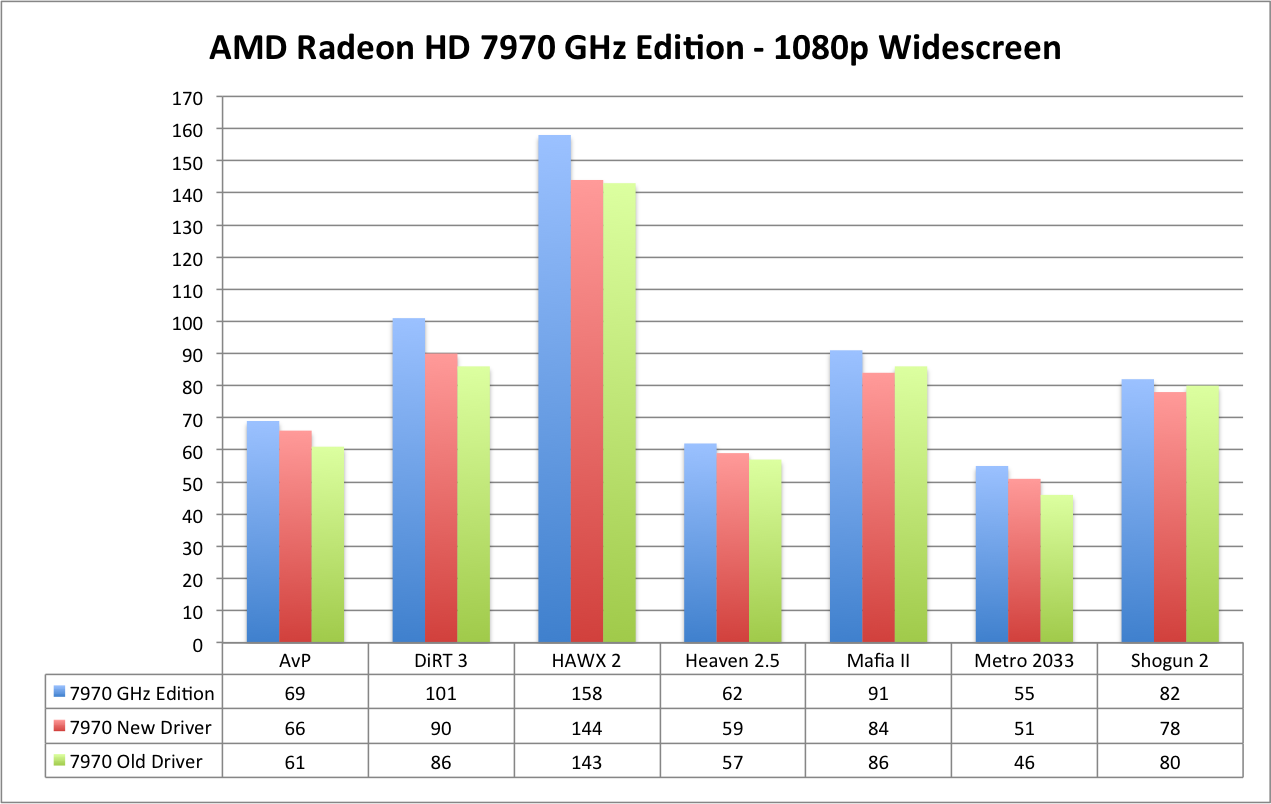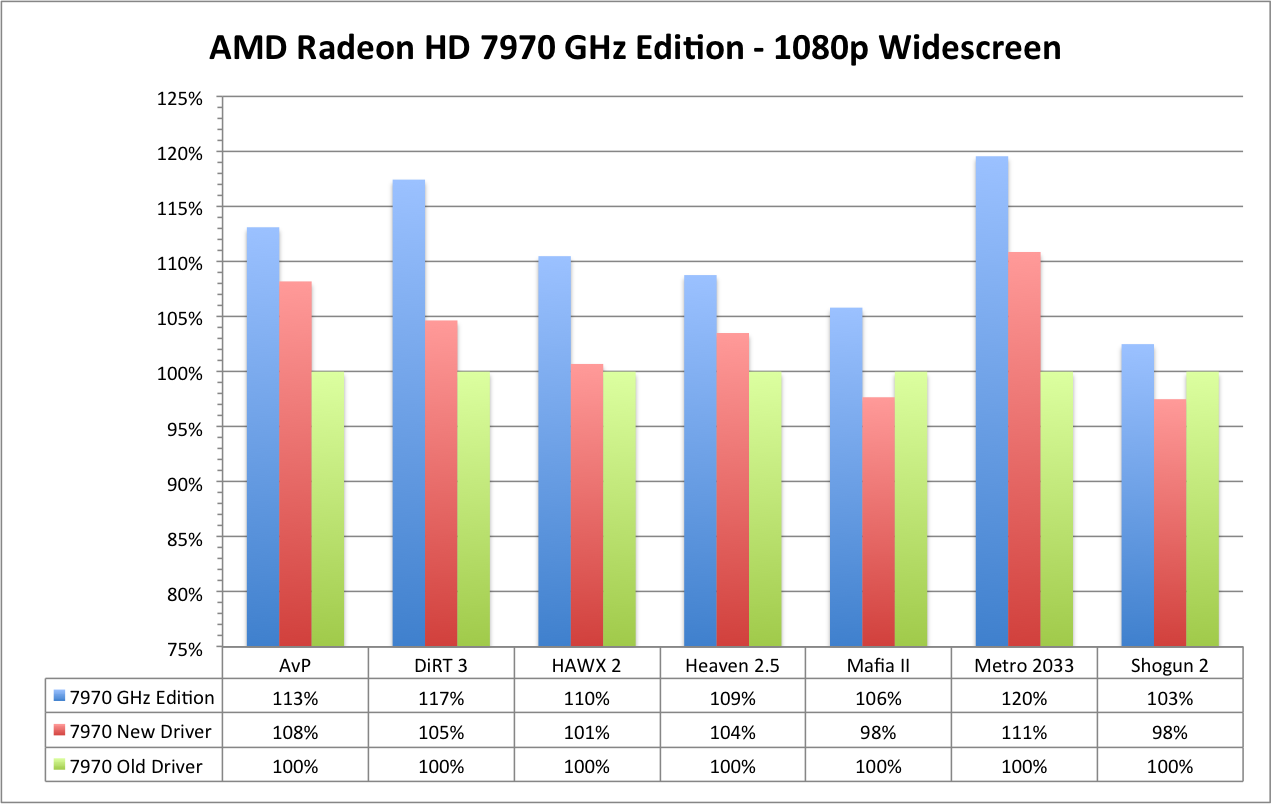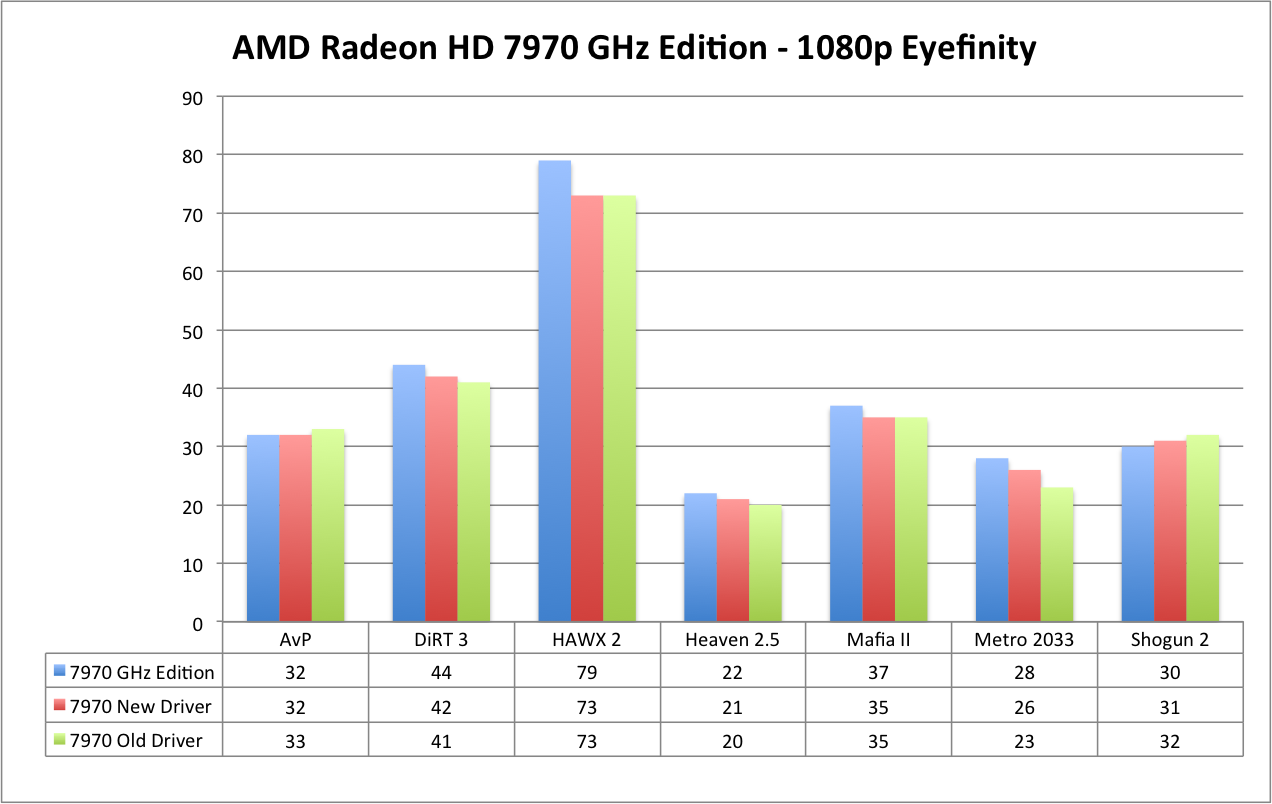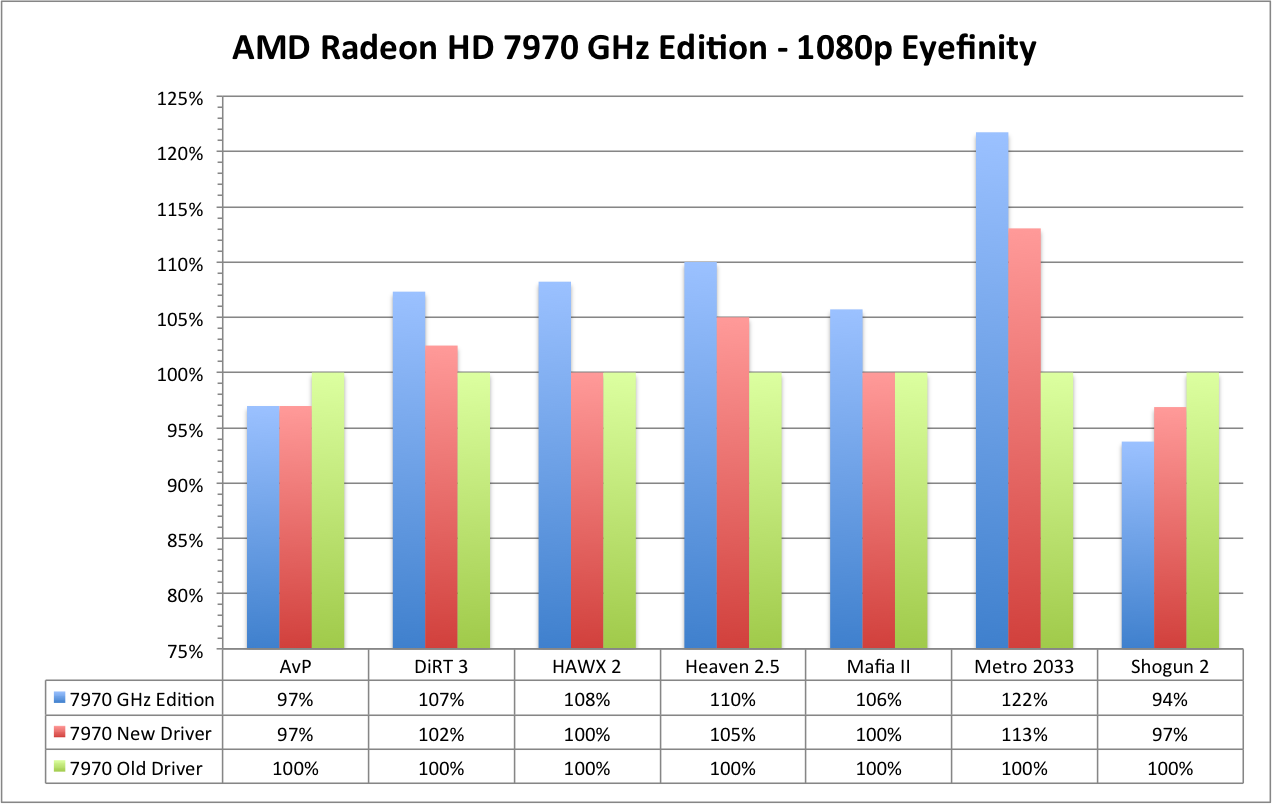AMD Radeon Refresh - HD 7970 GHz Edition (Review)
With all of the expected single-GPU SKUs in the Southern Island product stack launched, you might think that this article would herald the arrival of the "big daddy" dual-GPU Radeon HD 7990. Well, you'd be wrong. And probably disappointed, considering that AMD all but showed off the Radeon HD 7990 at AMD Fusion Developer Summit.
What we are talking about is an update to the flagship Radeon HD 7970, with the HD 7970 GHz Edition. The "GHz Edition" monicker was first used with the mainstream Radeon HD 7770, being the first card to break 1,000 MHz barrier for the core clock. The original Radeon HD 7970 launched with a 925MHz clock, and a 250W max power profile. The GHz Edition of HD 7970 is specced at a base core clock speed of exactly 1GHZ, and a "Boost Clock" of 1.05GHz, while maintaining the original 250W power draw. In all of my testing, the Boost was always boosting, and we were running at 1GHz+
The original Radeon HD 7970 launched at an MSRP of $549 (considered by many to be high), but was reduced to $479 (after NVIDIA brought pressure to bear with the GTX 680). The Radeon HD 7970 GHz Edition will sell alongside the original offering, at a price of $499. The GHz carries a price premium of 4.2%. Will we get that much additional performance out of a 13.5% increase in the core clocks?

| Card | GPUs | Transistors | Memory | Bus Width | Shaders | Clock (MHz) | TDP (Watts)* | Power | MSRP | ||
| Core | Mem | Idle | Max | ||||||||
| AMD Radeon HD 7970 GHz Edition | 1 | 4.3B on 28nm | 3GB | 384-bit | 2,048 | 1,050 | 1,500 | <3 | 250* | 8+6-pin | $499 |
| AMD Radeon HD 7970 | 1 | 4.3B on 28nm | 3GB | 384-bit | 2,048 | 925 | 1,375 | <3 | 250* | 8+6-pin | $479 |
| AMD Radeon HD 7950 | 1 | 4.3B on 28nm | 3GB | 384-bit | 1,792 | 800 | 1,250 | <3 | 200* | 6+6-pin | $399 |
| *These values represent the maximum wattage allowed through the AMD PowerTune. Idle for the 7000-series is based on a "long idle" scenario. | |||||||||||
PowerTune w/ Boost
AMD launched it's PowerTune feature set with the Radeon 7000 series launch, and it allowed the card to achieve both higher max clocks and a lower idle state. PowerTune with Boost allows for both the dynamic clock and dynamic voltage controls. This is probably enabled by the fact that the core voltage of the Tahiti XT2 core was lowered to 1.02V, from the 1.175V of the original Tahiti XT core.
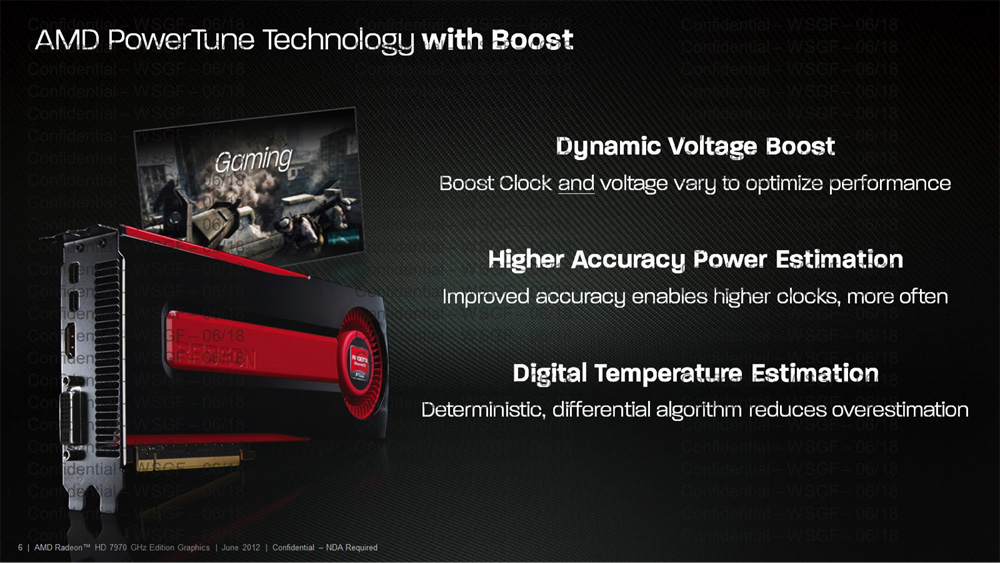
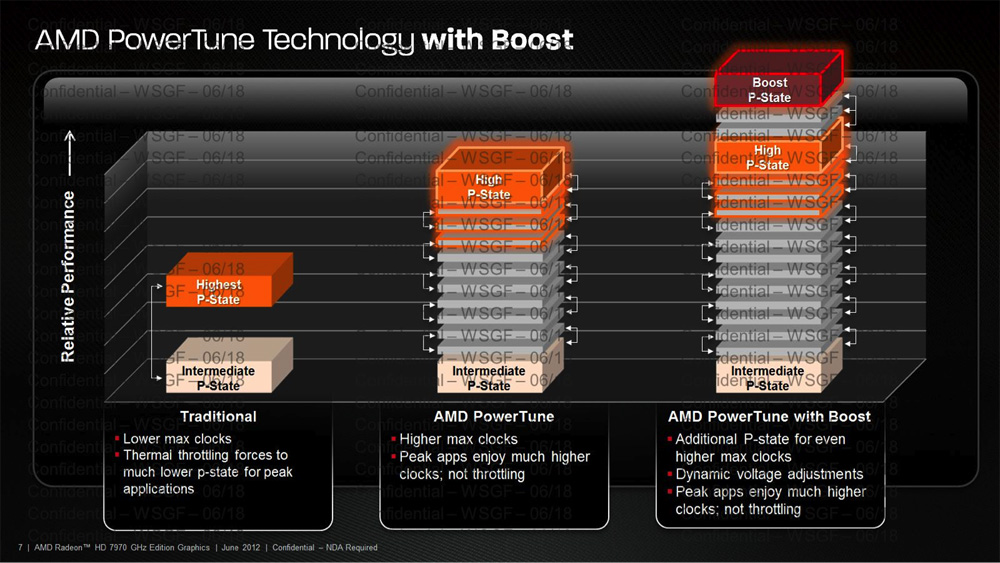
Performance Improvements
Obviously a faster core clock will translate into a faster card. In the press briefing, AMD also touted performance improvements in their driver. The question becomes how much of the improvements in the new card are from new silicon, and how much is from improved driver performance. To parse this out, I went back and tested the original HD 7970 with the new driver.
With regards to the driver, widescreen saw some good gains in Aliens vs. Predator and Metro 2033, and moderate gains in Dirt 3 and Heaven 2.5. This was moderated by flat performance in HAWX 2 and some slight declines in Mafia II and Shogun 2. In reality these last two benchmarks were only off by 1-2 fps, so I'd still call this flat (I'm sure the machine has accumulated a bit of cruft since the original benchmarking).
The total fps across the benchmark suite increased 2% in our selected tests, for 1080p widescreen. Eyefinity was a similarly mixed bag. Heaven 2.5 and Metro 2033 shows some gains, with Dirt 3, HAWX 2 and Mafia II flat. AvP and Shogun 2 posted single frame losses. Overall, only a 1% increase in Eyefinity.
Looking at the new silicon, the Radeon HD 7970 GHz Edition posted strong gains in virtually every title. Overall the new card was 9% faster than the original HD 7970 with new drivers. In Eyefinity, the HD 7970 GHz Edition was 5% faster than the original card. Point to note, none of these titles take advantage of the new features developers have leveraged for GCN. We'll look at those titles more in future articles.
